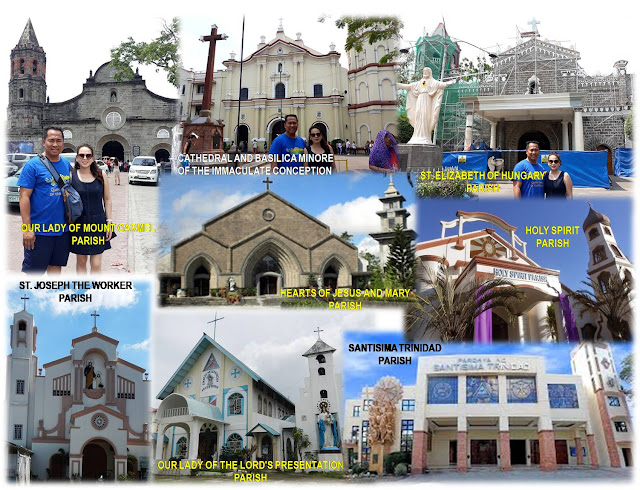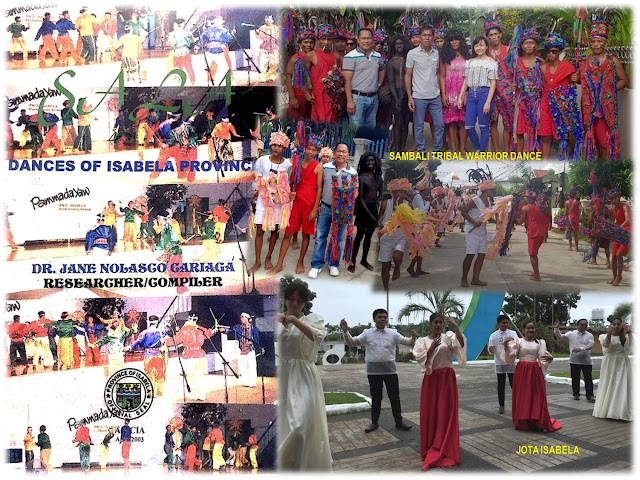65. VISITA IGLESIA AT THE CRADLE OF THE 1st REPUBLIC
VISITA IGLESIA at the
CRADLE of the 1st REPUBLIC
Dr. Troy Alexander G. Miano
29 March 2018
Every Maunday
Thursdays, my wife and I visit Roman Catholic Churches in a certain locality to
pray, meditate and also as our form of penitence. This past years, we were able
to journey around all the Spanish period Churches in the City of Manila and
more recently all the parishes of Rizal province. This year, I drafted an
itinerary particularly in the capital city of Malolos in Bulacan province.
Included in our circuit are seven parishes in the Vicariate of Malolos plus the
seat of the diocese - the Cathedral-Basilica Minore
of the Immaculate Conception or commonly known as the Malolos Cathedral.
According to Rappler,
there are several theories on the origins of the church visit or visita iglesia
practice. Among them is of early Christian communities of the Roman Empire
commemorating the suffering and death of Jesus in 7 parts: Garden of
Gethsemane, The House of Annas, Tribunal of Caiaphas the High Priest, Tribunal
Before Pilate, Trial Before Herod, From Herod Back to Pilate and From Pilate to
Golgotha (Calvary). When Christianity became the official religion of the Roman
Empire under Emperor Theodosius I, the practice evolved to its current form of
visiting 7 churches. There were 7 major basilicas founded in Rome which were
believed to hold the tombs of prominent martyrs like St. Peter and St. Paul. A
pilgrimage to all 7 basilicas then developed among the faithful. The practice
then spread to other parts and cities of the Roman Empire, and became
associated with the Holy Week when they were made to honor the Blessed
Sacrament. Following the fall of the Roman Empire, the practice slackened
somewhat until during the first Jubilee of the Catholic Church, when the church
visitations were revived by Pope Boniface VIII.
Like all things
Catholic, Visita Iglesia came to the islands via Spanish colonizers,
particularly through Augustinian missionaries in the 1560s. Nowadays,
the Visita Iglesia has expanded beyond being a purely religious
practice, as tourists often travel alongside the faithful to visit old colonial
churches and cathedrals across the country. The practice also underwent a 21st century makeover in the Philippines with the
launch of Catholic Bishops' Conference of the Philippines'
visitaiglesia.net and other Visita
Iglesia websites, which allow users, particularly overseas Filipinos
and the infirm, to undergo virtual church visits at home.
The road to Malolos
was not easy. Traffic is everywhere including the NLEx as shown in the GPS
navigation software Waze. We went through the traditional route via McArthur
Highway which was also congested and took us almost three hours to reach
historic Barasoain Church or the Our Lady of Mt. Carmel Parish Church in
the capital city of Malolos, Bulacan
Barasoain was
originally part of Malolos until its official separation on August 31, 1859. In
1903 it became part of Malolos again. The old Church constructed by Augustinian
missionary Fray Francisco Royo was destroyed by fire in May 1884 but rebuilt by
fellow Augustinian Fray Juan Giron in 1885. This Church was the seat of the
Revolutionary Congress which convened on September 15, 1898 up to November 13, 1899,
under the presidency of Pedro A. Paterno. Among the important measures passed
by the Congress was the Malolos Constitution, drafted chiefly by Felipe G.
Calderon.
Half a kilometer away, via Kapitan Kiko Street, is the Cathedral of Our Lady of the Immaculate Conception founded in 1580 which is located in front of the Malolos City Hall. A large Statue of Our Lady of the Immaculate Conception stands in front of the religious edifice. General Emilio Aguinaldo y Famy (1869-1964), as President of the First Philippine Republic, held office on the Cathedral's Convent from September 10, 1898 to March 25, 1899. This is also the mother church of the Diocese which was created on November 25, 1961 by the metropolitan Archdiocese of Manila and was canonically created on March 11, 1962.
More than three
kilometers away, via Estrella Street, is another Spanish era church - the Santa
Isabel Church, officially known as St. Elizabeth of Hungary Parish. Located at
Fr. Kuatro Kantos Street, the Church is the center of religious activities in
the old pueblo of Santa Isabel which was also founded in 1859 but was reverted
as a barrio of Malolos during the early American colonization in 1903 together
with Barasoain.
To complete the
7-Church visita iglesia, we visited five more parishes established in recent
decades: the St. Joseph the Worker Parish (founded in 1980) located in Panasahan,
Parish of the Holy Spirit (founded in 1994) at Alido Heights in Bulihan, Hearts
of Jesus and Mary Parish (founded 1995) located in Mojon, Quasi-Parish of Santissima
Trinidad (founded in 2003) situated at Maunlad Homes Subdivision and the Our
Lady of the Lord's Presentation (also founded in 2003) also in the same
subdivision. Only two parishes in the whole vicariate were not visited: the San
Isidro Labrador Parish also in Bulihan and the Stella Maris Parish located in
the island barangay of Pamarawan.
We were able to hit two
birds with one stone as we accomplished our annual Maundy Thursday vow at the
same time visit the seat of the First Philippine Republic. My last visit in
this historic locality was in 2015 where I made a walking tour on every notable
edifice or spot where big permanent galvanized markers with complete
description were installed. The National Historical Commission of the
Philippines (NHCP) mounted 15 markers in the city and more than a dozen other
markers set up by the Local Government Unit in 2014 and by other organizations
like the Veterans Federation of the Philippines (VFP) and the Meralco.
My favorite markers
were the three installed by the Philippine Historical Committee (now the NHCP) in
1959 in front of the Basilica Minore of the
Immaculate Conception all with the same content but engraved in three different
languages: (1) REPUBLIKA PILIPINA. 1898-1901. SA KUMBENTONG ITO ITINATAG ANG
PRESIDENSIYA NG UNANG REPUBLIKA PILIPINA NA PINANGULUHAN NG KGG. EMILIO
AGUINALDO Y FAMY AT DITO’Y NANATILI MULA NOONG IKA-10 NG SETYEMBRE 1898
HANGGANG IKA-20 NG MARSO 1899. (2) PHILIPPINE REPUBLIC. 1898-1901. IN THIS CONVENT,
GENERAL EMILIO AGUINALDO Y FAMY AS PRESIDENT OF THE FIRST PHILIPPINE REPUBLIC
HELD OFFICE FROM 10 SEPTEMBER 1898 TO 29 MARCH 1899. (3) REPUBLICA FILIPINA.
1898-1901. EN ESTE CONVENTO SE ESTABLECIO LA PRESIDENCIA DELA REPUBLICA
FILIPINA CUYO PRESIDENTE FUE DON EMILIO
AGUINALDO Y FAMY Y LO OCUPO DESDE EL 10 DE SEPTIEMBRE DE 1898 HASTA EL 29 DE
MARZO DE 1901.
Our Holy Week sojourn was filled with prayer, meditation, spiritual
upliftment and historical learning. My wife and I, devout Catholics and lovers
of history believes that though there is separation of Church and State, the
support of the religious in the affairs of the
country is still significant in the progress and development of the
nation. Practicing a tradition like the visita iglesia gives us a renewed faith
ready to face the test of life and the times.




Mga Komento
Mag-post ng isang Komento